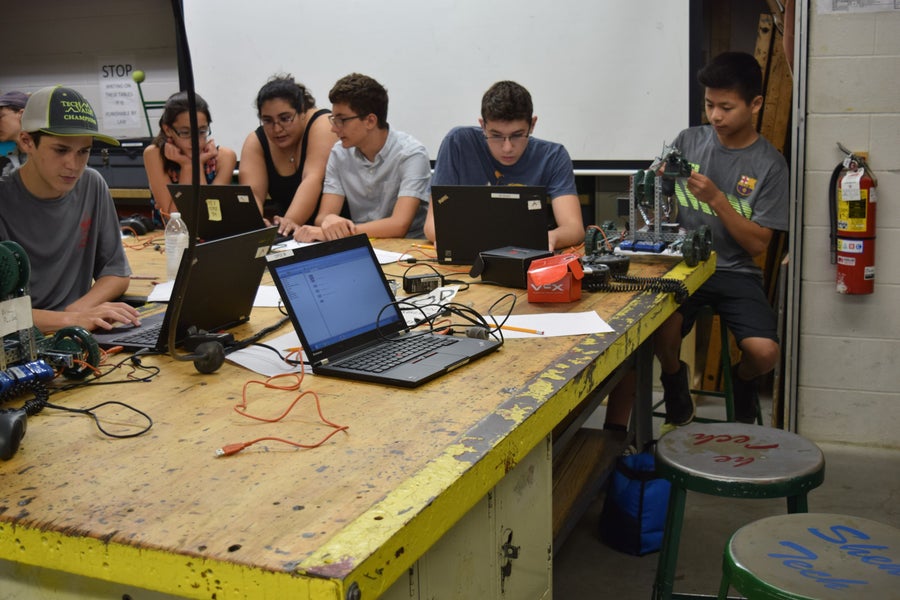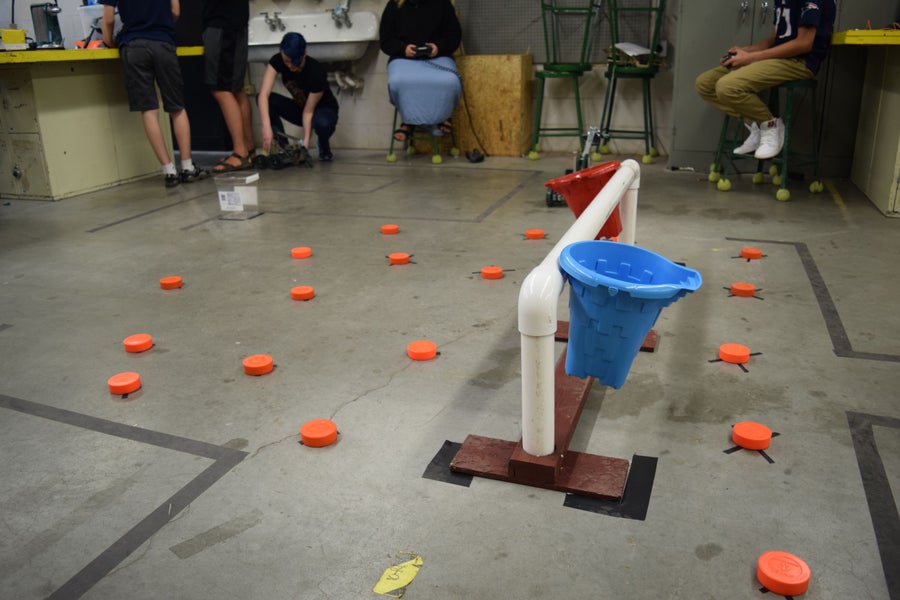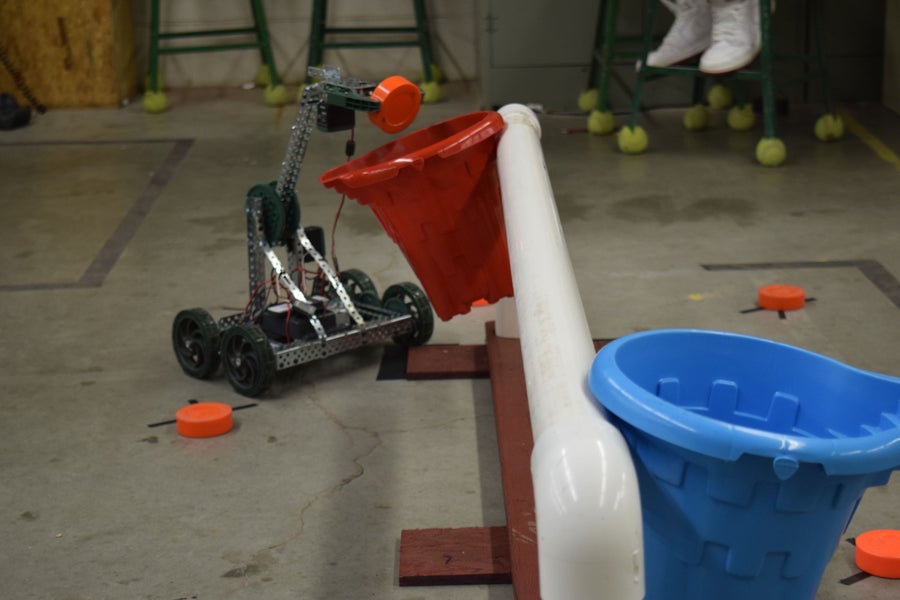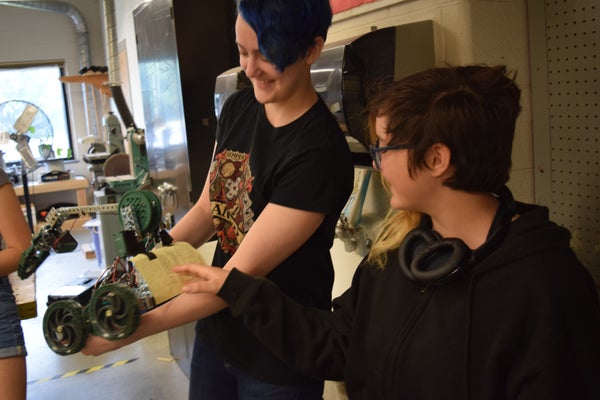This article was published in Scientific American’s former blog network and reflects the views of the author, not necessarily those of Scientific American
Imagine that you wanted to get teens excited about a competitive, extracurricular team. It should include strategy, real-time problem solving, teamwork, adaptability, practice, and require a competitive spirit. What options come to mind? Football? Soccer? Basketball? Volleyball? What about robotics?
Competitions – ranging from local teams to the global stage – are introducing increasing numbers of kids and teens to the world of robotics. Many of the youth programs are designed to bring competitors in right at the point of optimizing a robot for competition. The opportunity to adapt or problem-solve with a fully functioning robot appeals to a wide range of young people – both those who may be intimidated by the idea of programming from scratch and those who have already mastered the fundamentals. Bringing those groups together facilitates the sharing of knowledge and a breeding ground for mutual enthusiasm.

Teams work with a program facilitator on the programming side of the room. Credit: Amanda Baker
On supporting science journalism
If you're enjoying this article, consider supporting our award-winning journalism by subscribing. By purchasing a subscription you are helping to ensure the future of impactful stories about the discoveries and ideas shaping our world today.
Rensselaer Polytechnic Institute’s Center for Initiatives in Pre-College Education (CIPCE) created a week-long summer academy based on the VEX robotics platform. For kids who wanted to expand their already established love of robotics, getting familiar with VEX opened doors to competitions that involve more than 16,000 teams in 40 countries. For those who wanted dip in their metaphorical toes, the shorter robotics academy provided the perfect introductory ecosystem. The program gave 13-15 year-olds a chance to spend a week building, programming, adapting, and improving a robot to ultimately face off against the work of their peers.
The teens who took part in the summer academy ranged in experience and motivation. Some already had experience programming games or using other robotics platforms. Others saw the week as a chance to get started. Both groups seemed to be having a great time. Angela (14) came in with experience programming LEGO robots, but she saw this as a chance to do something more open ended. “The code here moves past the drag-drop style of programming,” she explained. “It lets you write things in a way that is more like the real world.” Her partner did not have other experience, but found that a little work went a long way in being able to use the platform effectively.

Mazes, pucks, and buckets waiting for robot competitors. Credit: Amanda Baker
The teens were given an overall challenge – score the most points in the given time – with a series of limitations that set the pair off strategizing. Each robot first had to navigate a short maze without touching the sides. Once through the maze, the robots entered an arena of buckets and pucks. The robot needed to navigate the array to pick up pucks and place them in buckets as quickly as possible. Some buckets were worth more points, and knocking a bucket over lost points for each puck that came out. Each pair had four minutes for the challenge, but with an important caveat: the first 90 seconds had to be completely automated. Only the last 2.5 minutes allowed for a driver with a remote control.
Teams explained that navigating the maze pushed them to be more precise, and not just in their programming. Because the first stage had to be autonomous, creating a method for placing the robot in the exact same starting position became critical. Then teams had to account for friction on the concrete floor and find a balance between maintaining speed and stability through turns. One particularly well-executed, 90-degree turn elicited a collective “oooo, nice” form the nearby teams while we were chatting.
The manual control stage then opened additional doors to the partnerships. While it was important discuss strategy and share tasks, the pairs knew that their chances of winning depended on having the best driver at the wheel when it counted. While the driver steered from puck to puck, the partner had to control the lowering, closing, lifting, and release of the claw. All of the earlier discussions about strategy had to made by the driver or the claw operator independently in the moment. With only 2.5 minutes to work, practice and trust in their partner’s decisions and skills were key.

Success! Credit: Amanda Baker
One of facilitators shared an anecdote from one of the early practice tasks. Teams were competing to grab pucks from a pile and drop them in a bucket across the room. One team had the idea to grab the bucket and move it next to the pile of pucks. After a brief outcry, new strategies took root. In STEM competitions, one team’s loophole is another team’s efficient engineering.
The moving-bucket incident begged another question: Could you dump another team’s bucket on purpose? Consensus said they could. An enthusiastic zeal for bucket-dumping followed and resulted in some highly efficient sabotage. But ultimately teams lost sight of the overall goal. All that time spent upending buckets left no time for scoring points of their own. While an exciting challenge to explore, teams ultimately had to recalibrate their priorities.
The program facilitators said that the competitive aspects pushed the teams to adapt and innovate based on each other’s ideas – and often cheer each other on. It was intimidating for some participants. Deirdre (14), who wants to build computers as a career, enjoyed the challenge. But she said that the competitive aspect didn’t appeal to her as much. Her partner, Angela, said that she normally felt the same way. “But this is my wheelhouse. In this context, like this, I actually really enjoy it,” she said.
Both Schulyer (14) and Mete (14) wanted to take the competition a step further. Given the chance, they would love to have direct robot battles or robot soccer games. They both knew it was beyond the scope of a one-week challenge, but they look forward to integrating all of the levels of work together. Mete’s younger brother was in a LEGO robotics camp, and he wished that the VEX group could similarly spend more time on the design aspect of their robots from scratch. Getting to spend more time on the tasks and strategy, however, was worth the sacrifice. Schulyer, who felt his school’s robotics class had become boring, agreed. Maybe a week can’t include design, programming, testing, adaptation, and competing – but it can sure go a long way in motivating teens to keep working on the other steps once they head home.
